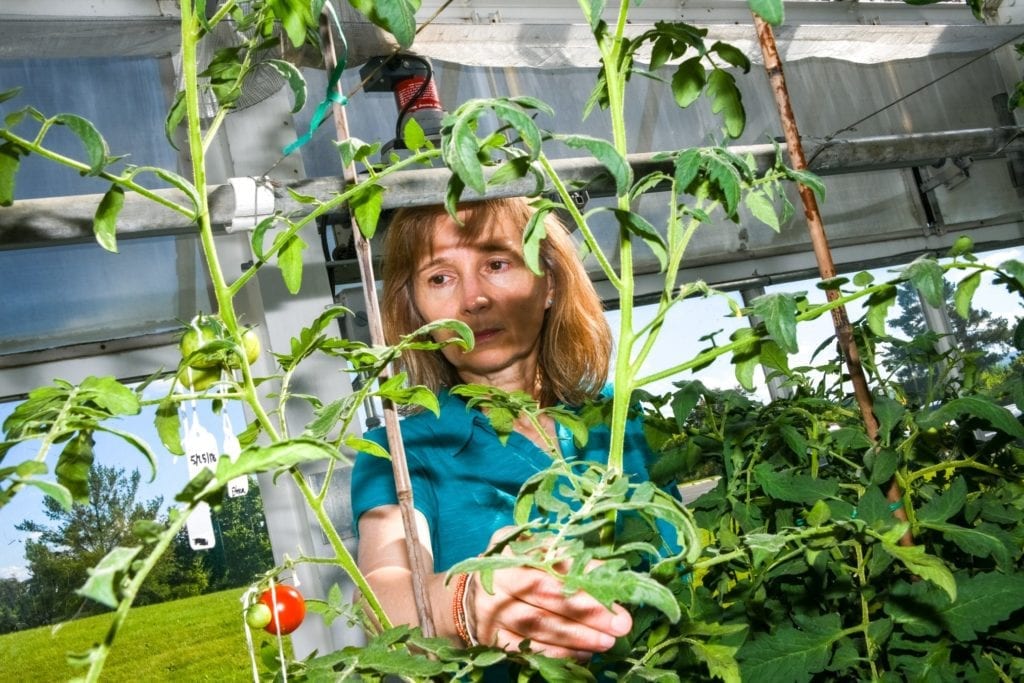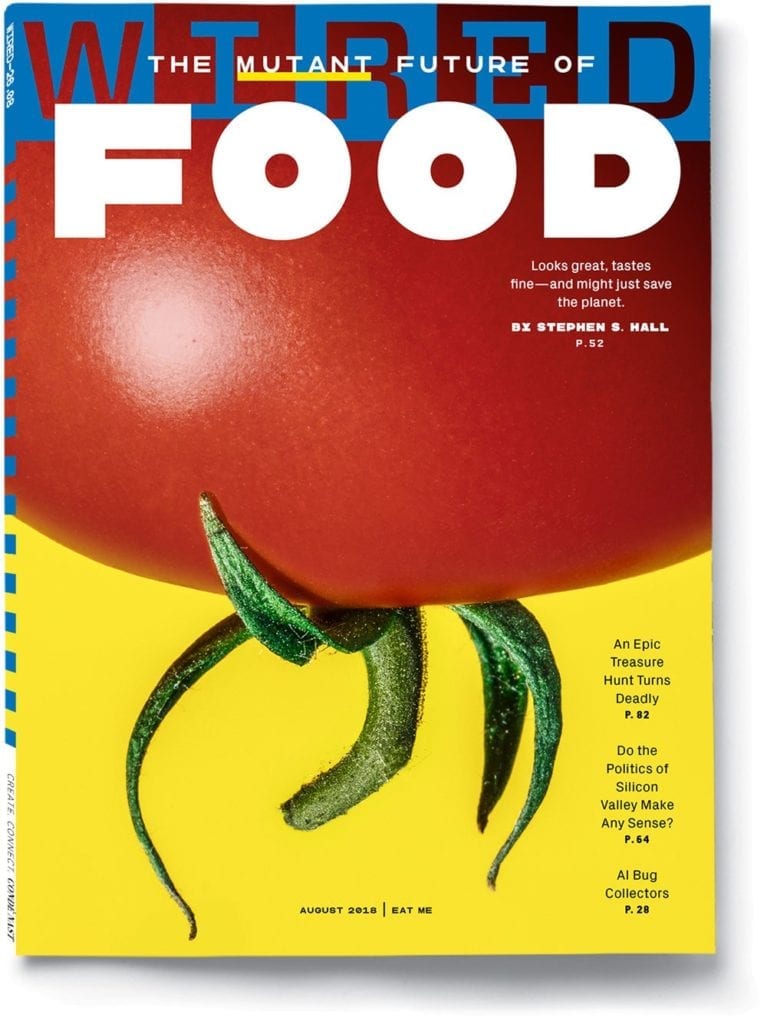News
CRISPR can speed up nature—and change how we grow food

Joyce Van Eck saw curled leaves on a tiny tomato plant growing on a petri plate and knew that the CRISPR experiment was a success. Credit: Dolly Faibyshev.

Van Eck and Lippman’s gene editing research is featured as the August 2018 cover story of WIRED Magazine.
BTI Associate Professor Joyce Van Eck and Zachary Lippman, a collaborator from the Cold Spring Harbor Laboratory, are part of an army of researchers using gene editing to turn the tomato into the laboratory mouse of plant science.
As soon as word of CRISPR broke, Lippman wondered, “Can we do it in tomato? And if we can, let’s move.”
Moving fast meant doing an experiment on a tomato gene that would prove the efficacy of CRISPR without too much delay. So they picked a weird gene that, when mutated, produced disfigured tomato leaves that looked like needles. The mutant version was called “wiry.”
“I still remember when I saw the first leaves coming up,” Van Eck recalls. The leaves were “radialized”—curled up into needle-like shapes. “Omigod, it worked!” she cried and raced down the hallways of the Boyce Thompson Institute to tell anyone who would listen. “I was thrilled because, you know, when does something work the first time?”
Not only had they demonstrated that CRISPR could produce a heritable trait change in a fruit crop, they also had their answer in two months rather than a year. They knew that the same basic process could theoretically be used to edit, with exquisite precision and unprecedented speed, any gene in any food crop. As soon as they knew it worked, Lippman and Van Eck began CRISPRring every trait they’d wanted to study for the past 15 years. The implications of their discoveries are continuing to change the way we think about and grow food.
Van Eck and Lippman’s research is featured as the August 2018 cover story of WIRED Magazine.


